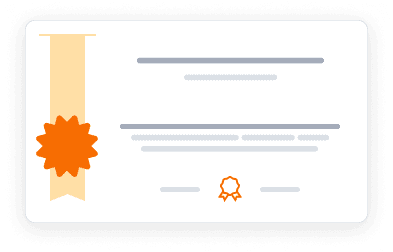This course is part of Computational Thinking using Python.
This foundational course introduces computer science and programming using Python 3.5, focusing on computational thinking and problem-solving skills. Students learn to write programs for practical problem-solving, covering core concepts from basic algorithms to data structures. The course emphasizes breadth over depth, providing a comprehensive introduction to computer science concepts while developing practical programming skills. It serves both as a standalone course for general computational literacy and as a foundation for more advanced computer science studies. The curriculum combines theoretical concepts with hands-on programming practice, featuring interactive lectures, coding exercises, and challenging problem sets.
4.6
(296 ratings)
11,22,534 already enrolled
Instructors:
English
English
What you'll learn
Develop a foundational understanding of computation and programming
Master basic Python programming language syntax and concepts
Implement and analyze simple algorithms for problem-solving
Practice effective testing and debugging techniques
Understand basic algorithmic complexity concepts
Work with fundamental data structures in Python
Skills you'll gain
This course includes:
Live video
Graded assignments, exams
Access on Mobile, Tablet, Desktop
Limited Access access
Shareable certificate
Closed caption
Get a Completion Certificate
Share your certificate with prospective employers and your professional network on LinkedIn.
Created by
Provided by

Top companies offer this course to their employees
Top companies provide this course to enhance their employees' skills, ensuring they excel in handling complex projects and drive organizational success.





Module Description
This comprehensive introduction to computer science uses Python 3.5 to teach fundamental programming concepts and problem-solving skills. The course covers computational thinking, basic algorithms, data structures, testing, and debugging. Students learn through a combination of video lectures, programming exercises, and challenging problem sets. The course emphasizes practical application while providing a broad foundation in computer science principles. It's designed to help students develop the ability to write programs to solve real-world analytical problems.
Fee Structure
Individual course purchase is not available - to enroll in this course with a certificate, you need to purchase the complete Professional Certificate Course. For enrollment and detailed fee structure, visit the following: Computational Thinking using Python
Payment options
Financial Aid
Instructors

3 Courses
Dugald C. Jackson Professor of Computer Science and Electrical Engineering at MIT
John Guttag is the Dugald C. Jackson Professor of Computer Science and Electrical Engineering at MIT, where he leads the Data Driven Medical Research Group within the Computer Science and Artificial Intelligence Laboratory (CSAIL). His research focuses on applying advanced computational techniques to medicine, with current projects aimed at predicting adverse medical events, assessing patient-specific responses to therapies, developing non-invasive monitoring tools, and enhancing telemedicine capabilities.

4 Courses
Senior Lecturer in Computer Science and Electrical Engineering at MIT
Ana Bell is a Senior Lecturer in the Department of Electrical Engineering and Computer Science (EECS) at the Massachusetts Institute of Technology (MIT), where she has been teaching introductory computer science since 2013. She holds a Bachelor of Applied Science from the University of British Columbia, as well as both an MA and PhD from Princeton University, where her research focused on computational biology.
Testimonials
Testimonials and success stories are a testament to the quality of this program and its impact on your career and learning journey. Be the first to help others make an informed decision by sharing your review of the course.
Frequently asked questions
Below are some of the most commonly asked questions about this course. We aim to provide clear and concise answers to help you better understand the course content, structure, and any other relevant information. If you have any additional questions or if your question is not listed here, please don't hesitate to reach out to our support team for further assistance.
-1726828298412.png&w=128&q=75)


